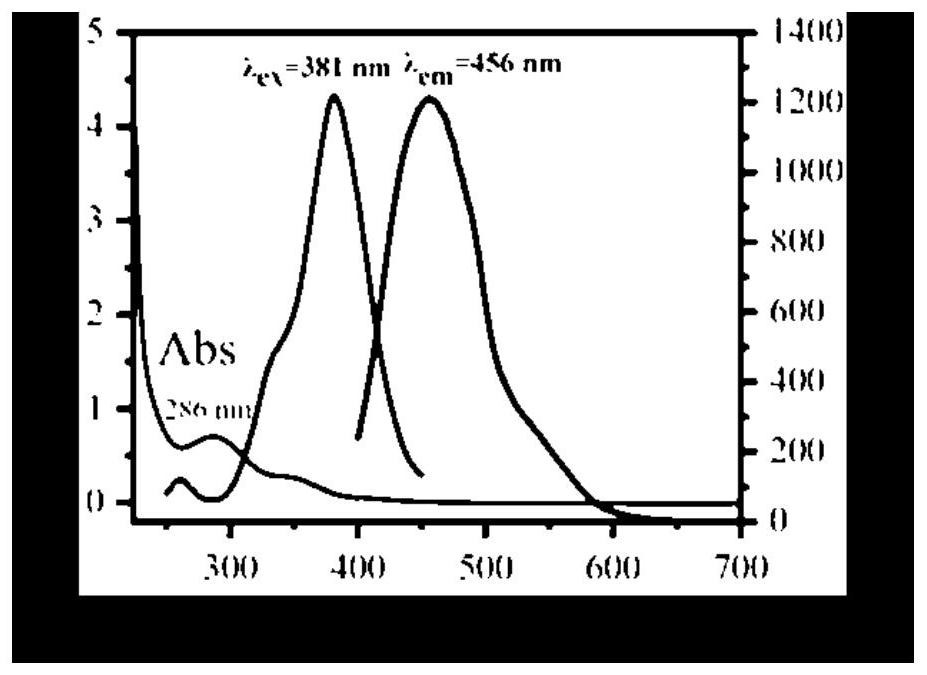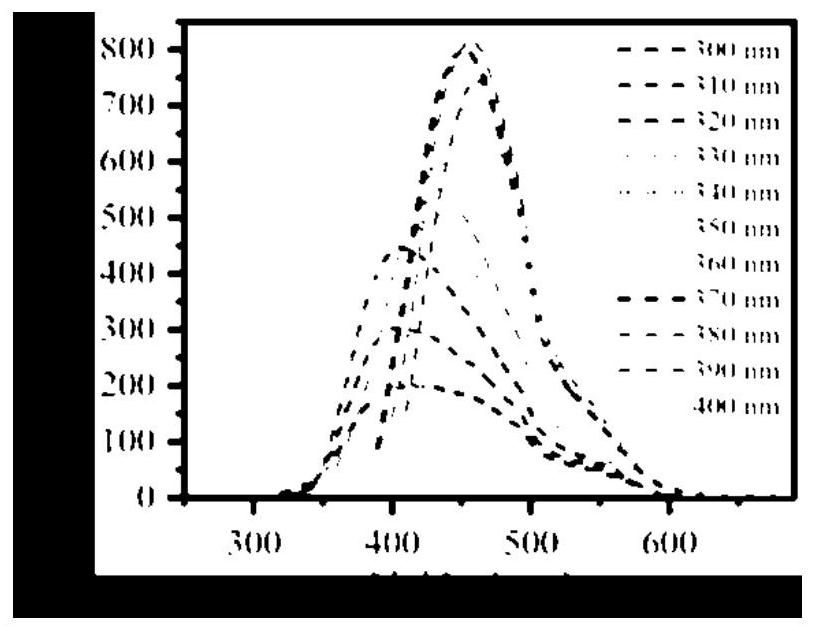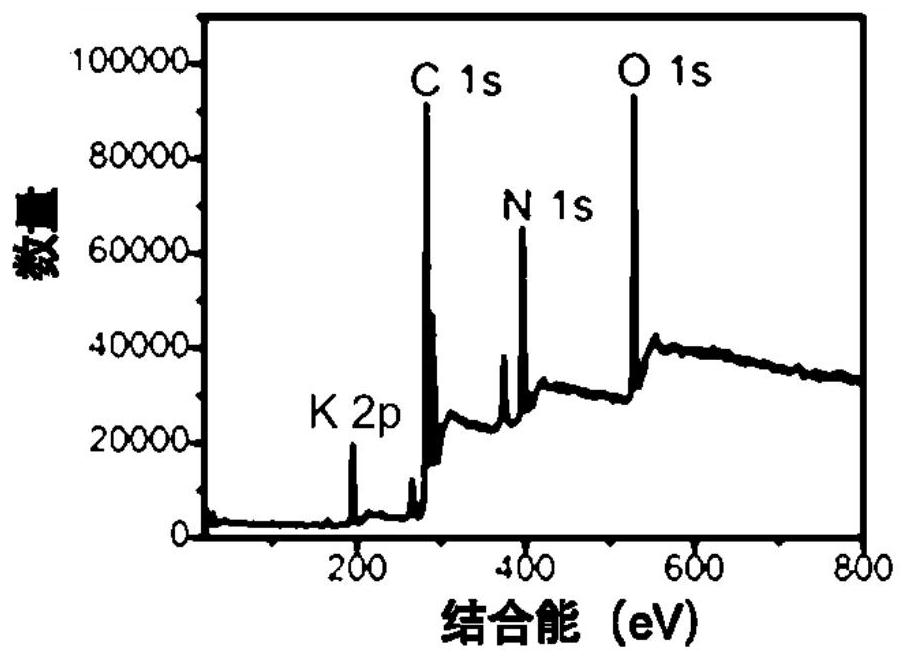A potassium-nitrogen co-doped carbon dot based on steamer peel and its preparation method and application
A co-doping, peeling technology, applied in chemical instruments and methods, nanotechnology for materials and surface science, fluorescence/phosphorescence, etc., can solve problems such as inability to achieve, achieve energy saving, high fluorescence quantum yield, The effect of easy availability of raw materials
- Summary
- Abstract
- Description
- Claims
- Application Information
AI Technical Summary
Problems solved by technology
Method used
Image
Examples
Embodiment 1
[0029] 1) 0.5g of discarded fire wheel peel was placed in a beaker, 8mL of ultrapure water was added, and 8mL of ethylenediamine was added to the solution, and after ultrasonic treatment, a mixed solution was obtained;
[0030] 2) The above mixed solution was placed in an autoclave, and hydrothermally reacted at 150°C for 3h;
[0031] 3) When the reaction is stopped, the reactor is naturally cooled to room temperature, and filtered with filter paper to remove the large particles in the solution after the reaction; after that, the dark brown filtrate is further filtered through a cylindrical membrane filter (0.22 μm) to obtain Potassium and nitrogen co-doped carbon dots aqueous solution prepared from the peel of the steamer;
[0032] 4) The above-mentioned carbon quantum dot aqueous solution was stored in a 4° C. refrigerator for later use, and the relative quantum yield (with quinine sulfate as the standard) was 15%.
[0033] Characterization and application of potassium-nitr...
Embodiment 2
[0035] 1) 0.5g of discarded fire wheel peel was placed in a beaker, 8mL of ultrapure water was added, and 8mL of ethylenediamine was added to the solution, and after ultrasonic treatment, a mixed solution was obtained;
[0036] 2) The above mixed solution was placed in an autoclave, and hydrothermally reacted at 150°C for 2h;
[0037] 3) When the reaction is stopped, the reactor is naturally cooled to room temperature, and filtered with filter paper to remove the large particles in the solution after the reaction; after that, the dark brown filtrate is further filtered through a cylindrical membrane filter (0.22 μm) to obtain Potassium and nitrogen co-doped carbon dots aqueous solution prepared from the peel of the steamer;
[0038] 4) The above-mentioned carbon quantum dot aqueous solution was stored in a 4° C. refrigerator for later use, and the relative quantum yield (based on quinine sulfate) was 12.6%.
Embodiment 3
[0040] 1) 0.5g of discarded fire wheel peel was placed in a beaker, 8mL of ultrapure water was added, and 8mL of ethylenediamine was added to the solution, and after ultrasonic treatment, a mixed solution was obtained;
[0041] 2) The above mixed solution was placed in an autoclave, and hydrothermally reacted at 150°C for 4h;
[0042] 3) When the reaction is stopped, the reactor is naturally cooled to room temperature, and filtered with filter paper to remove the large particles in the solution after the reaction; after that, the dark brown filtrate is further filtered through a cylindrical membrane filter (0.22 μm) to obtain Potassium and nitrogen co-doped carbon dots aqueous solution prepared from the peel of the steamer;
[0043] 4) The above-mentioned carbon quantum dot aqueous solution was stored in a 4° C. refrigerator for later use, and the relative quantum yield (based on quinine sulfate) was 13%.
PUM
 Login to View More
Login to View More Abstract
Description
Claims
Application Information
 Login to View More
Login to View More - R&D
- Intellectual Property
- Life Sciences
- Materials
- Tech Scout
- Unparalleled Data Quality
- Higher Quality Content
- 60% Fewer Hallucinations
Browse by: Latest US Patents, China's latest patents, Technical Efficacy Thesaurus, Application Domain, Technology Topic, Popular Technical Reports.
© 2025 PatSnap. All rights reserved.Legal|Privacy policy|Modern Slavery Act Transparency Statement|Sitemap|About US| Contact US: help@patsnap.com



